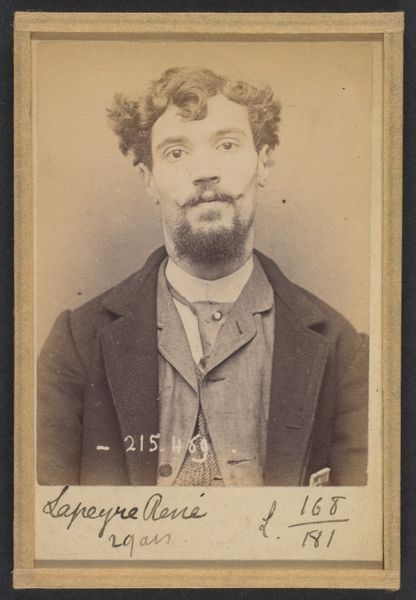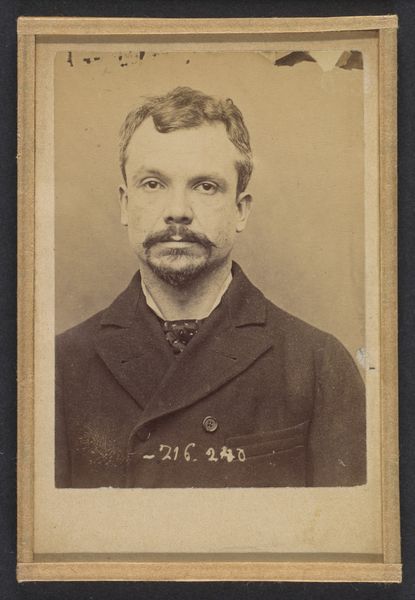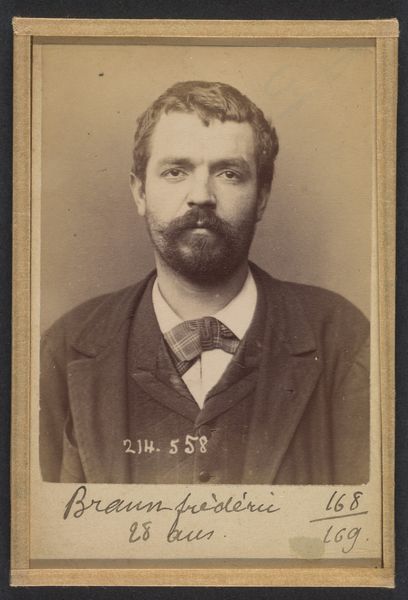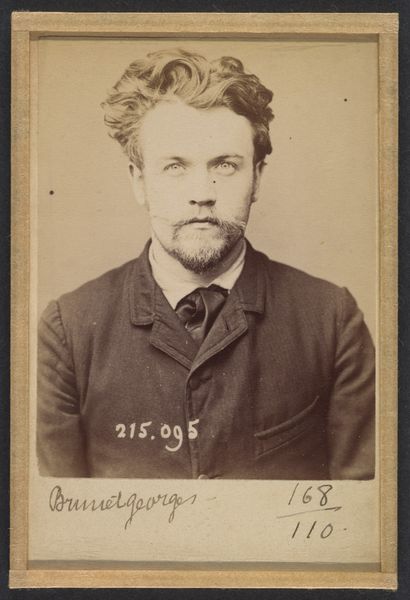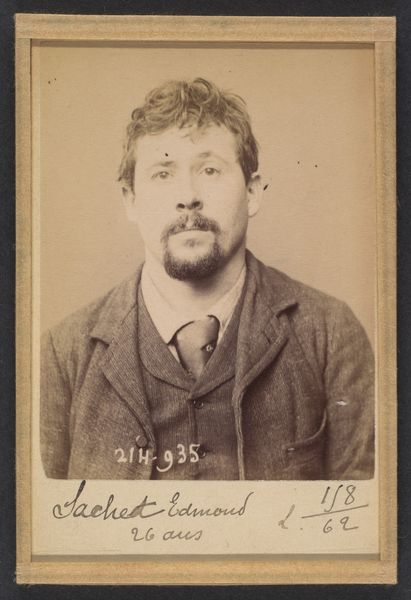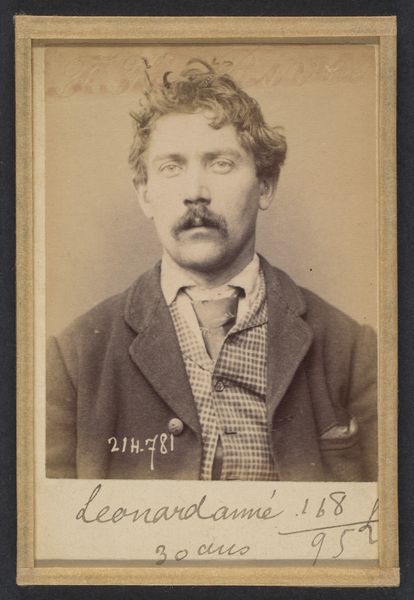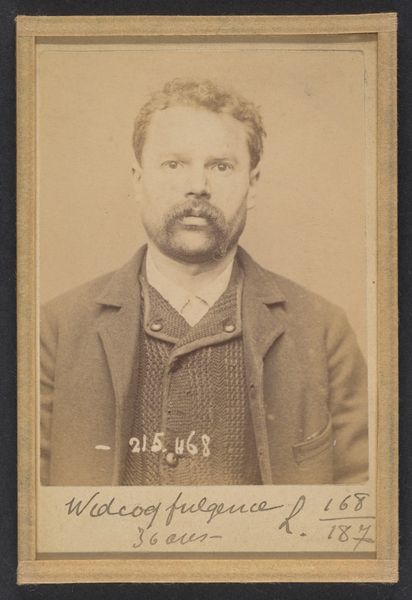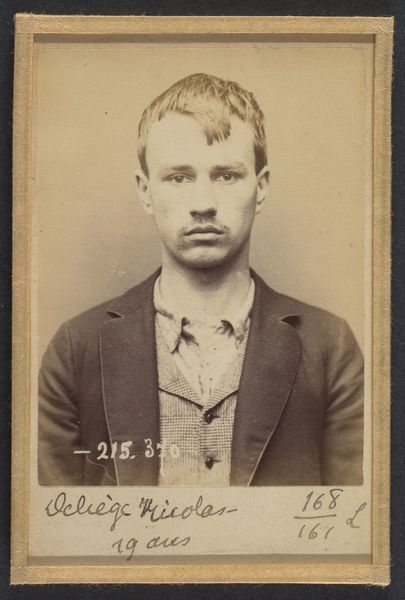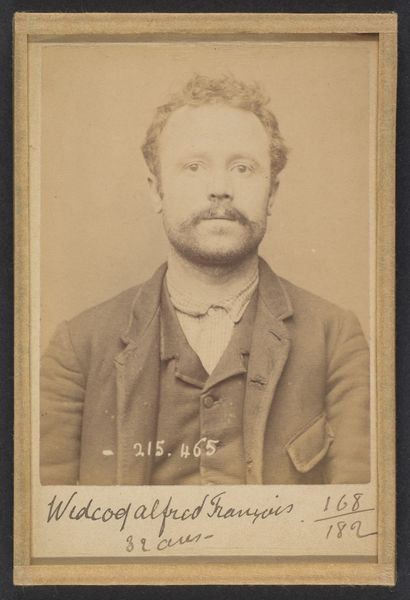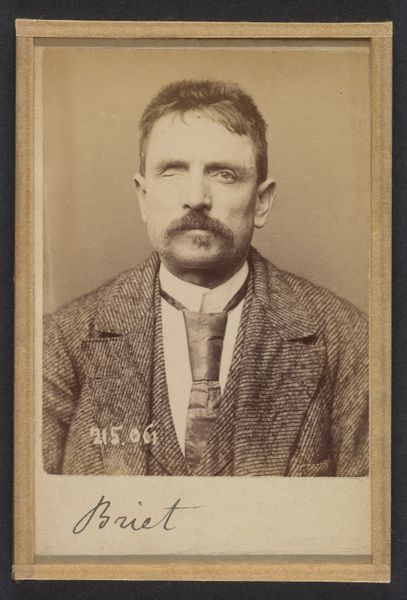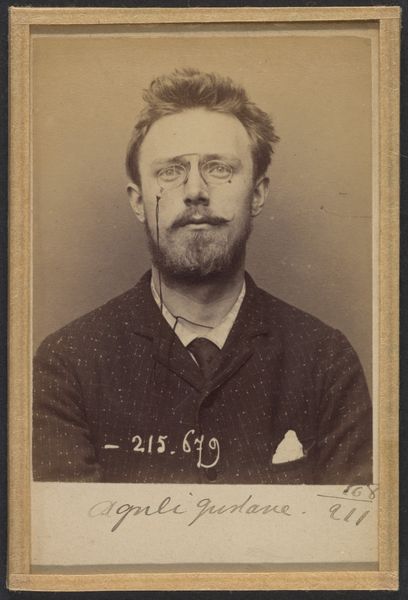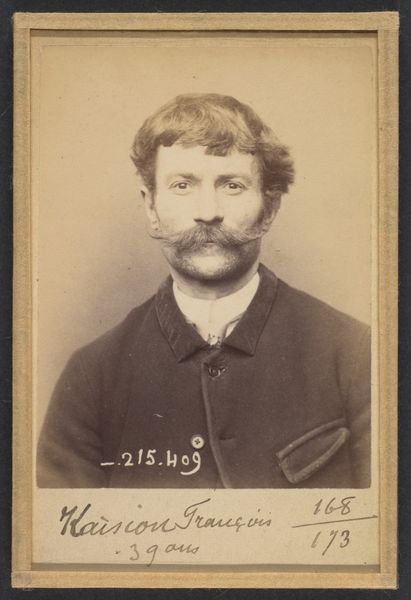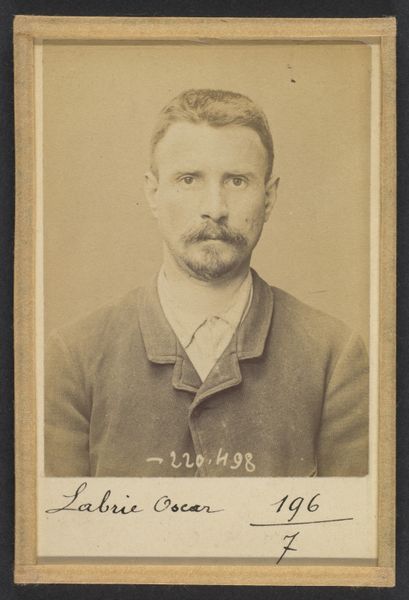
Mérigeau. Jacques. 35 ans, né à St-Léger-les-Melles (Deux Sèvres). Ébéniste. 19/12/93. 1893
0:00
0:00
photography
#
portrait
#
photography
#
realism
Dimensions: 10.5 x 7 x 0.5 cm (4 1/8 x 2 3/4 x 3/16 in.) each
Copyright: Public Domain
Editor: Here we have Alphonse Bertillon's photograph, "Mérigeau. Jacques. 35 ans," taken in 1893. It's a simple portrait, but something about its almost clinical directness feels… unsettling. What do you make of this photograph? Curator: This image is an artifact of the "Bertillonage" system, a method of criminal identification using precise body measurements. These weren't art portraits in the traditional sense, but instruments of power, defining and categorizing individuals within a larger societal framework. The sitter's gaze isn’t meant to convey personality but data. The man's job, ebéniste, is also recorded - an indicator that someone’s profession was now important in crime solving and recording data for profiling. Does that change how you see it? Editor: It does, quite a bit! Knowing it was for criminal identification shifts the whole context. The subject’s direct gaze now seems more defiant, or perhaps resigned, rather than simply unsettling. Curator: Exactly! This is the crux of it. Bertillon's system reflects a desire for order and control in a rapidly changing society, influenced by emerging scientific and statistical methods. Photography became a tool for reinforcing social hierarchies and controlling deviance. The seemingly objective "realism" becomes quite loaded when viewed through a socio-political lens. Editor: So, what appeared to be a straightforward portrait is actually steeped in the history of social control. Curator: Precisely. It's a reminder that seemingly neutral visual representations can have significant implications for how individuals and groups are perceived and treated within society. Understanding its historical context, really forces us to re-evaluate the purpose of this image and the power structures in play at the time. Editor: I'll definitely remember that; art isn't always about beauty or emotion, but social narratives as well. Curator: Indeed. And considering those narratives is essential to truly understanding what we see.
Comments
No comments
Be the first to comment and join the conversation on the ultimate creative platform.
